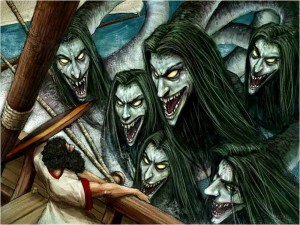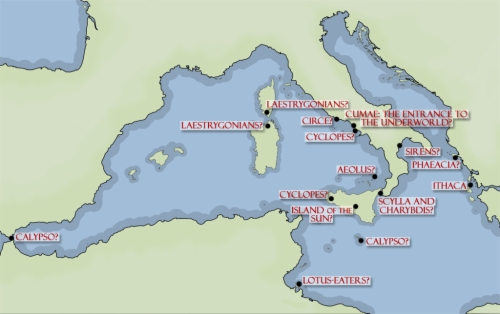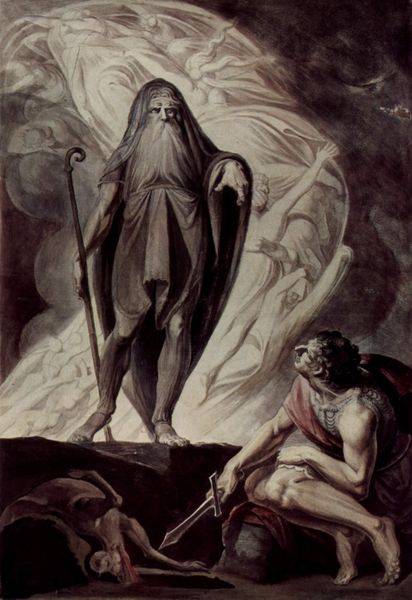| Performance Indicators:
P.S ELA-2 Reading Analysis: Cite strong and thorough textual evidence to support analysis of what the text says explicitly as well as inferences drawn from the text, including determining where the text leaves matters uncertain. A. Evaluate the relevant themes and synthesize how they are present in the novel in oral and written responses. P.S ELA-3 Reading Craft and Structure: Determine an author’s point of view or purpose in a text in which the rhetoric is particularly effective, analyzing how style and content contribute to the power, persuasiveness or beauty of a text. A. Understand SOAPSTone: Speaker, Occasion, Audience, Purpose, Subject, Tone |
The outline below provides you with a point of emphasis in preparing for The Greek Tragedy Exam. You will be permitted to use two-sided notes on a standard 8″ by 11″ paper printed in Georgia 12 pt. font. No other interpretation of this standard will be accepted.
PART 1 VOCABULARY Aristotle’s Terminology
You will be responsible for being able to apply the Aristotle Terminology from PART 1 of The Greek Tragedy Outline in order to answer questions related to the elements centered on Oedipus the King and The Odyssey. This section will require you to apply your understanding through analogies. 15 POINTS
dithyramb– a Greek choral song or chant of vehement or wild character and of usually irregular form
Stasimon– a choral ode, especially in tragedy, divided into strophe and antistrophe.
Mise en scene– the sets, costumes, make-up and other elements that depict the play.
mimesis– an imitation of an act, All poetry, Aristotle argues, is imitation or mimesis.
Pauson inferior– A Greek painter mentioned by Aristotle who depicted people just as they are, neither more nor less beautiful than the average of humankind.
catharsis– purging or purification of emotions through the evocation of pity and fear, as in tragedy.
hubris– excessive pride or self-confidence; arrogance.
pathos– the quality or power in an actual life experience or in literature, music, speech, or other forms of expression, of evoking a feeling of pity or compassion.
hamartia– a tragic flaw, hamartia has a complex meaning which includes “sin,” “error,” “trespass,” and “missing the mark” (as in archery–missing the bull’s-eye). The “mistake” of the hero has an integral place in the plot of the tragedy. The logic of the hero’s descent into misfortune is determined by the nature of his or her particular kind of hamartia.
evocation-an act or instance of evoking; a calling forth: the evocation of old memories.
Oracle is a person (such as a priestess of ancient Greece) through whom a deity is believed to speak
Peripety– a sudden and complete change in a situation, especially in a story: It is a turning-point, a veritable moral reversal.
PART 2 CHARACTERS: You will be responsible for being able to identify the characters from The Odyssey and Oedipus The King, knowing the role that each played in advancing the plot of the two tragedies. Matching 35 Points
| Odysseus Argos Helen Melanthius Antikleia Athena Nester Agamemnon Antiphates Broadsea Telemachus Eurymachus Nausicaa Argos Oedipus Penelope Antinous Alcinous Charybdis Creon Zeus Eumaeus Arete Clytemnestra Jocasta Hermes Polyphemus Peisistratus Aegisthus Antigone Poseidon Circe Thrasymedes Elpenor Sphinx Eurycleia Tiresias Helios Eurylochus Calypso Apollo Aeolus Ino Laertes Menelaus Anticleia Irus Mentes Mentor Laestrygonians Lotus Eaters Muse Orestes Skylla Sirens |

PART 3 Locations: This true/false section emphasizes the plot of the three tragedies: Oedipus the King, The Odyssey, and Romeo and Juliet. You will be responsible for knowing the locations mentioned by associating each location with the event that occurred there. The Book links about The Odyssey, Part 3 of The Greek Tragedy Outline centering on Oedipus the King, and the study guides for Romeo and Juliet emphasize important developments that will be featured on this section of the exam. True/False 25 Points
| Ithaca Lamos Olympus Ismarus Aeaea Ogygia Phaeacia (Scheria) Crete Mantua Aiolia Hades Thrinacia Sparta Verona Pylos Styx Troy Thebes Corinth |
PART 4 THEMES: This written response section of the exam will center on questions related to Aristotle’s definition of tragedy as it applies to the three tragedies. 25 POINTS
“A tragedy, then, is the imitation of an action that is serious and also, as having magnitude, complete in itself; in language with pleasurable accessories, each kind brought in separately in the parts of the work; in a dramatic, not in a narrative form; with incidents arousing pity and fear, wherewith to accomplish its catharsis of such emotions.” (Imgram Bywater: 35).


